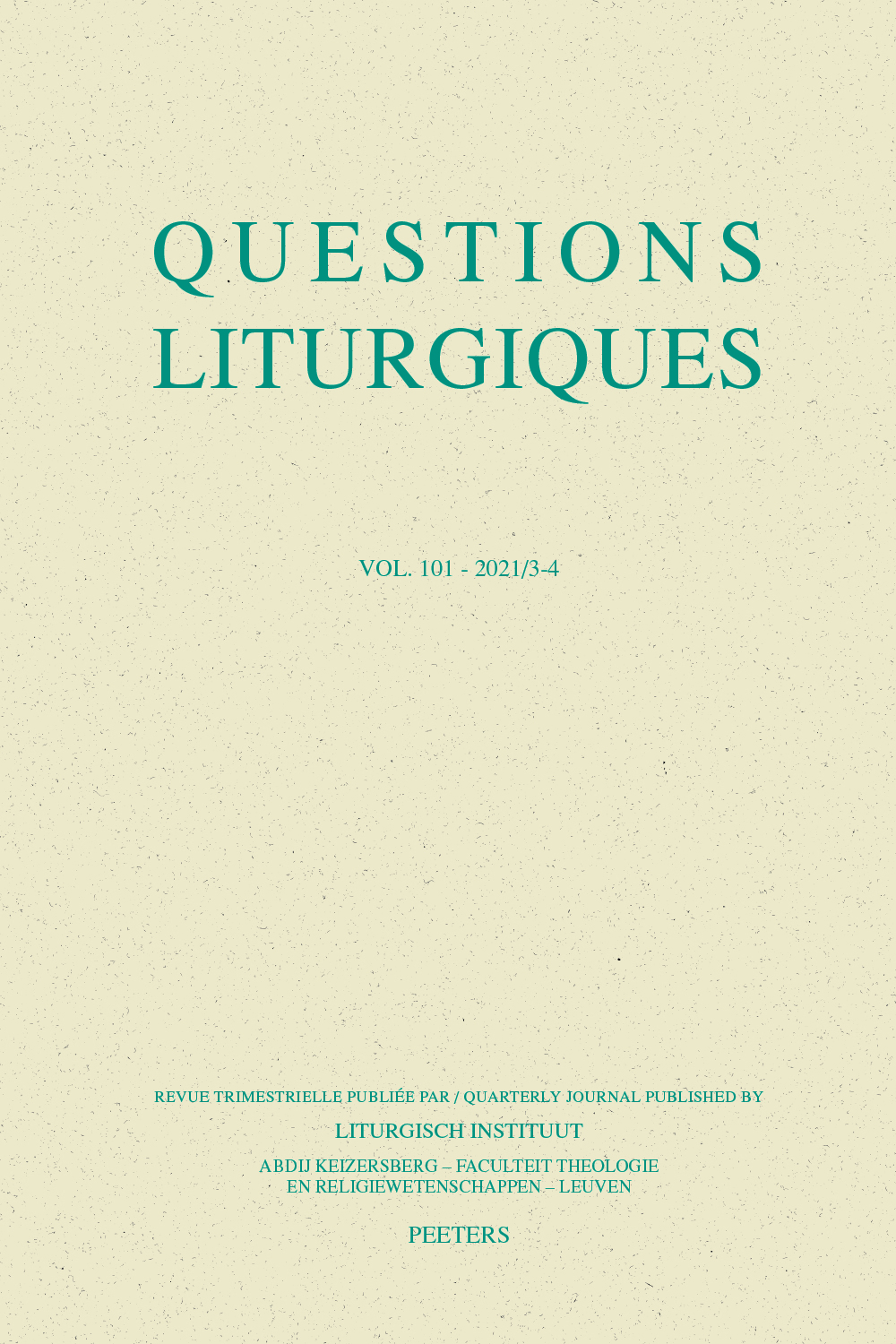 previous article in this issue previous article in this issue | next article in this issue  |

|
Document Details : Title: A Narrative Understanding of Anglican Liturgy in Times of Suffering Subtitle: The Narrative Approach of Ruard Ganzevoort Applied to Common Worship Author(s): VAN OMMEN, Léon Journal: Questions Liturgiques/Studies in Liturgy Volume: 96 Issue: 1-2 Date: 2015 Pages: 64-81 DOI: 10.2143/QL.96.1.3094640 Abstract : For several decennia narrative theories and methods have been applied to the study of theology. Practical theology has witnessed the rise of narrative in several of its domains, such as homiletics and pastoral counselling. However, narrative approaches to liturgy are still in their infancy. This paper applies the narrative theory and reading method of Ruard Ganzevoort to one specific Anglican liturgical text, i.e. Common Worship, Order One. Both the value and the potential caveats of a narrative reading of the liturgy are identified. In order to demonstrate the merits of a narrative analysis of the liturgical text the question which will lead the present study, by way of case study, is: 'How does liturgy help suffering people to find meaning in their situation?' The narrative reading method demonstrates that suffering can be interpreted in more than one way, and so the answer to the question depends on one’s interpretation of the liturgical text. Finally, the article demonstrates the relational nature of the narrative theory of Ganzevoort. Storytelling is used to begin, maintain, change or end relationships. Liturgy is clearly meant to change or maintain the relationship between God and people. Depuis plusieurs décennies des théories et méthodes narratives ont été appliquées à l’étude de la théologie. La théologie pratique a été témoin de l’emploi croissant du narratif dans divers de ses domaines, comme l’homilétique et l’accompagnement pastoral. Cependant les approches narratives de la liturgie sont encore dans leur enfance. Cet article applique la théorie narrative et la méthode de lecture de Ruard Ganzevoort à un texte spécifique de la liturgie anglicane, c.à.d. le Common Worship. Oder One. À la fois la valeur et les risques potentiels d’une lecture narrative sont identifiés. Dans le but d’établir les mérites d’une analyse narrative du texte liturgique la question qui fait l’objet de la présente étude, un cas d’espèce, s’énonce: «Comment la liturgie aide-t-elle ceux qui souffrent à découvrir un sens dans une telle situation?» La méthode de lecture narrative démontre que cette souffrance peut être interprétée de plusieurs manières, et ainsi la réponse à cette question dépend de l’interprétation du texte liturgique. Finalement, cet article établit la nature relationnelle de la changer ou terminer ses relations. La liturgie est clairement voulue pour changer ou maintenir les relations entre Dieu et son peuple. |
|
